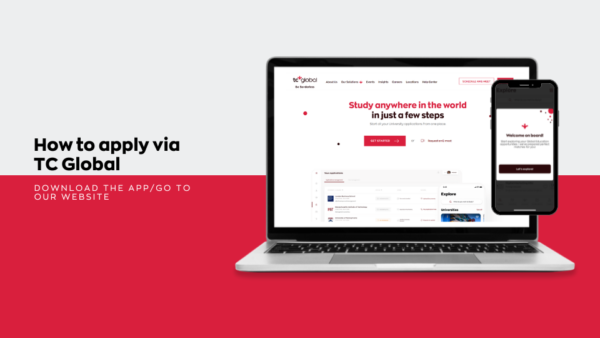
The UK and the US have undoubtedly been the most popular study destinations for students from India for the longest time. Both nations are known for their world-class education systems, standard of living, research facilities and career building opportunities.
Then, how does one choose between the two?
Here is your answer. The most important thing to keep in mind is the course of your choice and the university’s standing in relation to the course. This has to be at the centre of all your choices.
Then come all the other factors such as
- The teaching-learning style of the department you are applying to
- The costs involved
- The admissions criteria that you need to meet
- Immigration policies and job opportunities and
- Attitudes towards international students in the university/ city/ country.
Keeping all these factors in mind, we have curated a pro-con list of studying in both the countries. Here’s a quick look at the pros and cons.
|
UK |
US |
Your choice depends on |
| Quality of Education |
- Top-tier universities rich with history and legacy
|
- 28 of the top 100 universities in the world are in the US.
|
- The country that’s better suited for your course and post-study work options
|
| Flexibility |
- Not much flexibility. You decide your course during your application process. Most universities do not allow you to change or experiment with courses.
|
- Very flexible (barring exceptions). You can change your major after admission. Even after choosing your major, you can take courses offered by other faculties.
|
- UK education goes in-depth while the US gives you a choice between in-depth and broadening your horizons.
- If you’re unsure about your major and may want to change, the US may be better
|
| Duration |
- Shorter courses – A bachelor’s degree is typically 3 years, and a master’s is 1–2 years in 2025.
- You can complete a bachelor’s and a master’s course in the same amount of time it takes to do a bachelor’s in the US.
|
- Longer courses: 4 year bachelor’s degrees and 2 year master’s degrees are more common.
|
- Your style of learning and finances. Programmes in the UK can get loaded and intensive since they provide the same level of education in a shorter span. You also get to save on tuition and living expenses.
- The US gives you more time and flexibility to explore everything the university has to offer. It also means that you are paying more.
|
| Tuition Fees Per Year |
- Considerably lower tuition when compared to the US. Average tuition in 2025 is around £23,000 ($28,900) for UG and £18,000 ($22,600) for PG.
|
- Average tuition fee in the US for 2025 is around $40,000 for bachelor’s courses. Master’s programs range from $26,000 – $130,000, with Ivy Leagues and tier 1 schools being significantly more expensive.
|
- Based on absolute figures, the US is significantly more expensive.
- But, it’s also at the cutting edge of many STEM programmes as compared to the UK.
- The USA is also a world leader in tech and innovation and the largest economy in the world.
|
| Cost of Living |
- Except for London, the average cost of living in 2025 is about £1,200 ($1,500) per month.
- If you are living in London, you can add another £250-350 to your monthly expenses
|
- The cost of living is also higher when compared to the UK.
- You will need at least $2,200 a month to live in a city like New York.
|
- The UK is comparatively more affordable, especially if you consider the free healthcare that even international students are eligible for.
|
| Post Study Work Regulation |
- The Graduate Immigration Route gives you three years to live and work in the UK after completing your degree, after which you can switch to a Skilled Worker visa.
|
- Immigration and post-study work policies are stricter.
- On completion of your course, you have 90 days to apply for OPT (1–3 years depending on STEM eligibility), followed by a 60-day grace period to transition to a work visa like the H1B lottery system.
|
- The US has relatively stricter immigration laws when compared to the UK.
|
| Campus Life |
- UK universities are slightly more formal in their approach.
- Extra-curricular activities do not rank very highly in their list of priorities unless it is a reputed club like the Oxford Debating Society.
|
- University life is more wholesome with enough importance also placed on extracurricular activities.
- Teaching styles are comparatively more informal, where students are expected to present original arguments.
|
- The UK is more academically oriented while the US offers a well-rounded university lifestyle.
- The US also has scholarships specifically for athletes and sportspersons.
|
| Safety |
- Living in a new country comes with its set of challenges and concerns for safety.
- There have been isolated incidents of racial discrimination, but remains comparatively safer.
|
- Gun violence and certain forms of racial discrimination remain concerns for international students.
|
- These concerns can be addressed based on the city and your lifestyle choices.
|
| Weather |
- The UK is notorious for its dreary and unpredictable weather.
|
- The US has different climates depending on which part of the country you are going to.
- You can choose from the icy cold regions bordering Canada to the desert of California or the coasts of Florida.
|
- A choice based on personal preferences
|
Let us now look into the pros and cons in detail.
The United Kingdom
ADVANTAGES
1. Top Tier Universities: If you are looking at the United Kingdom to pursue your higher education, there are a number of world renowned universities and colleges to suit your requirements. Unlike the US, UK universities also have the weight of history and legacy, making them more renowned across the globe.
Some of the oldest universities in the world are located in the UK. The top universities such as Universities of Oxford or Cambridge are synonymous with academic excellence. In addition to your course, these kinds of universities train you on critical thinking and problem solving skills, have access to state-of-the-art research infrastructure and provide excellent opportunities for global networking.
The UK is also a great destination for courses to study after 12th grade – it has a superb variety for programmes in some top universities.
Here is a list of the top ten universities in the UK according to 2025 QS World University Rankings.
| S.No |
World Ranking |
University |
| 1 |
2 |
Imperial College London |
| 2 |
4 |
University of Oxford |
| 3 |
6 |
University of Cambridge |
| 4 |
9 |
UCL |
| 5 |
31 |
King’s College |
| 6 |
34 |
The University of Edinburgh |
| 7 |
35 |
The University of Manchester |
| 8 |
56 |
University of Bristol |
| 9 |
61 |
56
London School of Economics and Political Science (LSE) |
| 10 |
74 |
University of Warwick |
2. Shorter Duration of Programmes:
Degrees in the UK are shorter when compared to the American education system. A bachelor’s degree is typically 3 years while a postgraduate programme can be completed within the span of a year. Even the average time taken to complete a doctoral research is lesser, compared to that of the US.
3. Lower Cost of Studying and Living:
The shorter duration also means that you are saving a year’s tuition. Moreover, when you look at absolute figures, tuition in the UK is significantly lower than that of the US. The average cost of an undergraduate course is £23,000 and a post graduate programme is £18,000 per year (Source: British Council). The same applies for cost of living as well. Let us look at rent for instance. You can find a room in a shared accommodation in most cities in the UK for around £600 (Around £750 in London). In the US, shared rooms can cost anywhere between $750 – $950, depending on the city.
4. Tutorial Systems:
In addition to the lectures, the UK education system also has the practice of tutorials, where a small group of students interact closely with a graduate or a doctoral student as part of the study. This provides one-on-one attention and builds research interest in undergraduate students.
5. More time and flexibility to find jobs after graduation:
International students are eligible to stay and work in the country for three years under the Graduate Immigration Route after which you can apply for a skilled worker visa. This gives you a longer duration and flexibility to find other jobs in the UK and build your career. The UK also has one of the highest GDP in Europe after Germany, signifying its position as a strong economy.
6. Free Healthcare:
Under the NHS, even international students who have entered the United Kingdom on a valid student visa are eligible for free healthcare.
7. Diverse cultures:
The UK’s fame as a global study destination means that a number of international students flock to the country. With its colonial history, the culture of the UK has become extremely diverse, allowing you to meet, interact and network with people from all walks of life.
DISADVANTAGES
1. Pound – INR Conversion:
As a student going from India, it is natural to subconsciously multiply your expenses by 100 to see how much it translates into rupees. This makes life in the UK appear unaffordable. This stops being an obstacle the more you get accustomed to life in the UK and start earning.
2. Formal learning set-ups:
The culture of universities in the UK is more formal when compared to the US. This approach to education is also part of a cultural difference that exists between the UK and the US. Universities are made of “colleges” dedicated to specific subjects or departments. You apply to a specific college and a course rather than to the university as a whole for specific courses. Most schools do not give you the option of trying out a few courses and then declaring your speciality.
3. Shorter Duration:
While this is also an advantage, it also means that the programme will be intensive and will require a lot of academic rigour. You will not have a lot of flexibility around deadlines or long breaks.
4. Dreary Weather:
This might not be a consideration for many applicants but the UK is known for its unpredictable and dreary weather. Dark clouds and rains are extremely common and take some time to get used to. For people with mental health issues and those suffering from seasonal depression, this weather might not be beneficial.
The United States
ADVANTAGES
1. World-Class Education:
There is no doubt that the United States has one of the finest education systems and highest ranked universities in the world. If you look at QS World University Rankings for 2023, you will notice that 28 of the top 100 universities in the world are located in the US. These schools function at the cutting edge of their respective disciplines, pushing the boundaries of knowledge. They are recognised globally, giving you multiple opportunities to explore your future as a global citizen. Ranging from the Ivy Leagues to the University of California or Stanford, there is no dearth of top level institutions of higher education in the United States of America.
Here is a list of the top ten universities in the US.
| S.No |
World Ranking |
University |
| 1 |
1 |
Massachusetts Institute of Technology (MIT) |
| 2 |
3 |
Stanford University |
| 3 |
5 |
Harvard University |
| 4 |
10 |
California Institute of Technology (CalTech) |
| 5 |
13 |
University of Chicago |
| 6 |
15 |
University of Pennsylvania |
| 7 |
16 |
Cornell University |
| 8 |
17 |
University of California, Berkeley (UCB) |
| 9 |
21 |
Yale University |
| 10 |
24 |
Johns Hopkins University |
In addition to the first tier schools, you also have a choice of smaller niche schools, community colleges or technical colleges with smaller student populations, especially if you are considering learning a trade. The US education system has solutions for whatever it is that you are looking for. There are many more colleges that are great to study at – the Ivy Leagues are not the only top universities in the US.
2. Choice of Programmes:
The kind of options US universities give you, the choice of courses and the combinations that you can create are virtually endless. You combine diverse courses and create a niche area of specialisation, not restricted by the demands of the discipline.
Unlike in the U.K., in most American universities, you apply and enter the university or the department in general as opposed to a specific course. You will be allowed to take a bunch of classes, explore what the university has to offer and then declare your major either at the end of your freshman or sophomore year. This gives you real life experiences and some more time before you choose a career track.
3. Wholesome, Well-rounded University Life:
As mentioned in the previous section, the UK university system is a little more formal. In the US, it is extremely common to have small class sizes and develop close professional relationships with members of the faculty. Students are expected to contribute to the teaching-learning process that happens within the classroom, listen to all points of view (whether it is a teacher or a student), observe, analyse and then attempt problem solving techniques. Not only is it tolerated but it is expected of students to present arguments and alternative points of view. Moreover, US universities also give importance to extracurricular activities, placing almost the same significance as academics.
4. A World leader in technology and innovation:
Even with China rising as a global leader in the technology race, the US remains unsurpassed in many areas of tech such as quantum computing, vaccines and space research. The country has a culture of collaboration between academia, industry, and government entities resulting in huge technological advancements and a highly skilled workforce. The federal US government supports and promotes innovation and entrepreneurship, by reducing bureaucratic hurdles, a relatively low corporate tax structure and entities such as the Small Business Administration. Its nominal GDP is also the highest in the world. It has been proven beyond a doubt that American start-ups and companies have significant global influence and market share. As an international student, it translates to tremendous research and work opportunities.
5. Support for International Students:
Almost all institutions of higher education in the US have some form of student support system, specifically for students from across the globe. These include organisations to help with internships, job searches, clubs and communities to promote extracurricular activities and to provide financial aid.
Based on the research published by the Institute of International Education, nearly 52% of overseas students who come to the US receive some form of financial aid whether it is from the universities, government grants or external organisations. There is also an extensive culture of providing teaching and research assistantships that give you the added benefit of adding work experience to your resume.
6. Multiculturalism and the American Dream:
The sheer geographical expanse of the United States of America gives you multiple opportunities to explore different cultures and environments. Besides, the USA has been a melting pot of cultures attracting people from all across the globe. As students from India, whether you want to interact with people from other cultures or find comfort in the familiar, most major American cities are diverse enough to satisfy your needs.
DISADVANTAGES
1. Cost of Learning and Living:
For international students, especially if you are from India, the cost of studying in the US is one of the biggest obstacles. According to the Education Data Initiative, a typical overseas student spends about $58,000 per academic year in a non-profit private university. That roughly converts to over 48 lakh INR per year. Without financial aid, this is a fairly large burden to bear.
Of the reported average amount, about $32,000 – $37,000 is spent on tuition while the rest is for other incidental university expenses and the actual cost of living. Life is expensive in the US, especially in the major cities, and even basic requirements such as healthcare or insurance costs a significant amount. A detailed cost comparison in the choice between the USA vs UK is covered in the next sections.
2. Academic Rigour:
It is very common for students from abroad to get used to the high standards of academic rigour expected by American universities. Each course comes with its own set of expectations, assignments and projects which must be completed on time with your original research and work put into it. The system requires highly self-motivated individuals to keep up with the pace.
3. Acclimating to a new work ethic:
In addition to the workload, you must also get used to a new culture and its work ethic. The American workforce and industries are highly competitive and require you to be at the top of your game to survive and grow. Up-skilling, in today’s world, is not a choice but a requirement.
4. Immigration policies:
Considering the level of competition and the number of Indian students who choose the US (around 210,000 Indian students studied in the US in 2023-24), the immigration policy and the post-study work visa options are quite strict. On completion of your course, you have up to 3 months to find an organisation in a relevant field for your Optional Practical Training (OPT). After your 1-2 years of OPT (2 years for STEM related fields), you only have a grace period of 60 days to update your visa to an employer-sponsored one or transfer it to another school for further studies.
5. Safety concerns:
The US is also infamous for its gun violence and violence triggered by racial discrimination. While this has not stopped a majority of students from choosing America, it does expect a certain degree of extra care to be safe during your stay in the country.
Winner: A Tie
Both countries have their own set of pros and cons and it is impossible and impractical to choose, based on general advantages and disadvantages. These are to help you mentally prepare for what to expect when you go to the country of your choosing. However, if you run through the parameters with a specific course and university in mind, you will be able to judge which of the two is better suited for you.












![Best Universities in New Zealand for International Students [2025 Rankings]](https://tcglobal.com/wp-content/uploads/2025/09/Best-Universities-in-New-Zealand-for-International-Students-2025-Rankings-600x338.png)